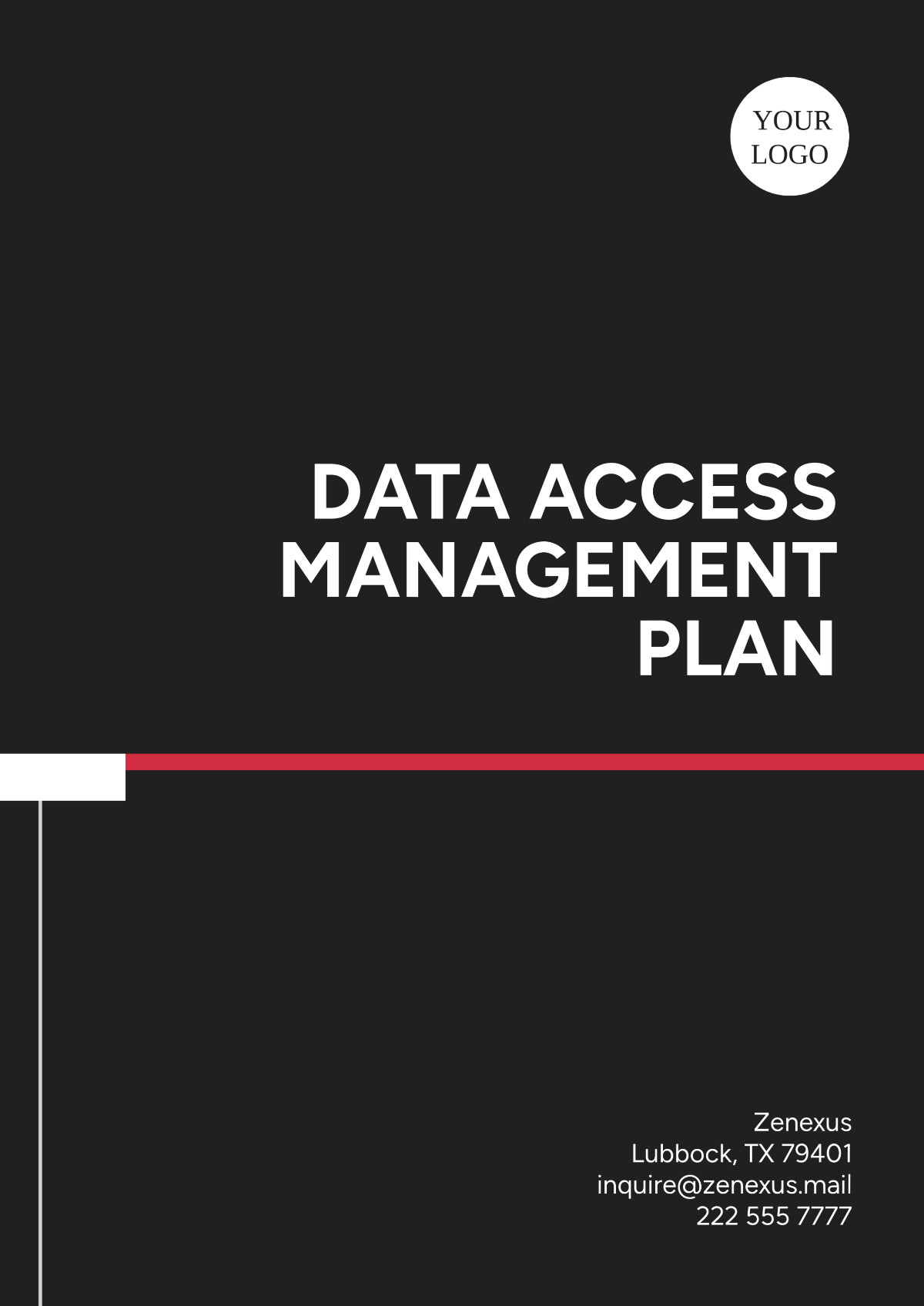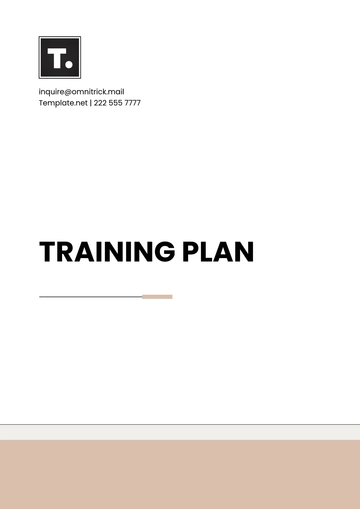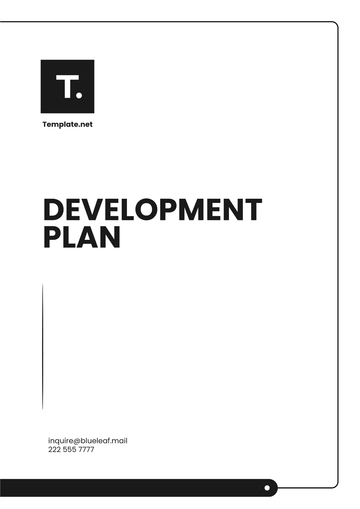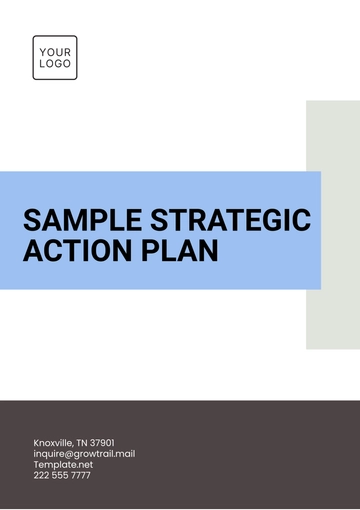Free Data Access Management Plan

1. Introduction
The purpose of this Data Access Management Plan is to establish a robust, organization-wide strategy for managing access to sensitive and critical data. The plan aims to safeguard data integrity, enhance data security, streamline processes for data accessibility, and ensure compliance with relevant laws and industry standards. By defining clear access controls and ensuring continuous monitoring, the organization will minimize the risk of unauthorized data access and improve operational effectiveness.
2. Objectives
This section outlines the key objectives of the Data Access Management Plan:
Protect Sensitive Data from Unauthorized Access: Ensure that all data is accessible only by individuals who are authorized and trained to handle specific data types, thus minimizing the risk of data breaches.
Facilitate Efficient Data-Sharing Processes: Promote seamless and secure data sharing within the organization while maintaining control over who can access what information and for what purposes.
Ensure Compliance with Relevant Laws and Regulations: Align data access management practices with industry-specific regulations (e.g., GDPR, HIPAA) to ensure legal compliance and mitigate legal and financial risks.
Define and Enforce Access Policies and Procedures: Establish clear, actionable access policies and procedures that define roles, responsibilities, and protocols for data access and permissions across the organization.
3. Roles and Responsibilities
3.1 Data Governance Committee
The Data Governance Committee is tasked with overseeing the implementation, enforcement, and continuous improvement of the Data Access Management Plan. Their responsibilities include formulating data access policies, ensuring compliance with regulatory standards, and conducting periodic reviews to update the plan in line with organizational and technological changes.
3.2 Data Owners
Data Owners are the individuals or departments accountable for managing access requests for specific data sets. They must ensure that access is granted only to authorized personnel based on the principle of least privilege, ensuring strict compliance with the organization's security protocols.
3.3 IT Security Team
The IT Security Team is responsible for protecting the organization’s data infrastructure, implementing security measures such as encryption and intrusion detection systems, and regularly assessing vulnerabilities in the data access chain. They also play a key role in incident response and maintaining secure access controls.
4. Data Classification
Data within the organization is categorized based on its sensitivity and the potential impact its exposure could have on the organization. Categories include:
Confidential Data: Highly sensitive information, such as financial records and personal data, requiring stringent access controls.
Restricted Data: Data that is sensitive but not critical, such as internal communications, requiring controlled but less restrictive access.
Public Data: Information that can be freely accessed and shared outside the organization, such as marketing materials and non-sensitive reports.
Data classifications will drive decisions about who can access which types of data, ensuring that sensitive information is protected while supporting business operations.
5. Access Control Policies
5.1 Authentication Procedures
To safeguard against unauthorized access, the organization implements multi-factor authentication (MFA) for all users accessing sensitive data. Users will be required to use a combination of something they know (password), something they have (security token or phone), and/or something they are (biometric verification). Regular password updates are mandated to enhance security.
5.2 Authorization Protocols
Authorization protocols define the process for granting access to data based on user roles. Access is granted according to the principle of least privilege—users are granted only the minimum level of access necessary to perform their duties. Access levels are clearly outlined and tracked to ensure compliance with data access policies and to prevent unnecessary permissions.
6. Access Management Procedures
6.1 Request and Approval Workflow
A structured, multi-step workflow governs data access requests. This process includes:
Request Submission: Users submit access requests through a secure system, specifying the data required and the purpose.
Review Process: Requests are reviewed by Data Owners or managers to assess necessity and compliance with policies.
Approval/Denial: Access is granted or denied based on the review, and the requester is notified accordingly.
This workflow ensures that access to sensitive data is granted only when necessary and according to established protocols.
6.2 Review and Revocation
Periodic reviews of access privileges are conducted to ensure that data access rights are appropriate. Access is revoked when an employee’s role changes, when they leave the organization, or when it is determined that access is no longer necessary for their job function. Access revocation is enforced to minimize the risk of unauthorized access.
7. Data Monitoring and Auditing
Continuous monitoring and periodic auditing of data access logs are crucial for identifying suspicious activities, such as unauthorized access attempts or policy violations. Automated monitoring systems track login attempts, data downloads, and modifications. Reports from these audits are reviewed by the IT Security Team and Data Governance Committee to ensure compliance and take corrective actions as needed.
8. Training and Awareness
Employee training is essential to the success of the Data Access Management Plan. Comprehensive training programs will be implemented for all employees, focusing on data access protocols, responsibilities, and the importance of data security. Periodic refresher courses will ensure that all employees stay informed about the latest security practices and regulatory updates.
9. Plan Evaluation and Updates
The Data Access Management Plan will undergo periodic evaluations to ensure it meets the evolving needs of the organization. Technological advancements, new regulatory requirements, and feedback from audits will be considered when updating the plan. This dynamic approach ensures the organization remains adaptive to changes in data access risks and regulations.
10. Conclusion
The Data Access Management Plan is a vital component of the organization’s data security framework. By defining clear access policies, roles, and procedures, the organization ensures the confidentiality, integrity, and availability of its data. Adherence to this plan will help mitigate the risks of unauthorized access, enhance operational efficiency, and maintain compliance with regulatory standards, ultimately fostering a secure and transparent data management environment.
- 100% Customizable, free editor
- Access 1 Million+ Templates, photo’s & graphics
- Download or share as a template
- Click and replace photos, graphics, text, backgrounds
- Resize, crop, AI write & more
- Access advanced editor
Secure your organization’s data with our Data Access Management Plan Template from Template.net. Fully editable and customizable, this template simplifies access policies for sensitive data. Easily edit it in our Ai Editor Tool for professional results.
You may also like
- Finance Plan
- Construction Plan
- Sales Plan
- Development Plan
- Career Plan
- Budget Plan
- HR Plan
- Education Plan
- Transition Plan
- Work Plan
- Training Plan
- Communication Plan
- Operation Plan
- Health And Safety Plan
- Strategy Plan
- Professional Development Plan
- Advertising Plan
- Risk Management Plan
- Restaurant Plan
- School Plan
- Nursing Home Patient Care Plan
- Nursing Care Plan
- Plan Event
- Startup Plan
- Social Media Plan
- Staffing Plan
- Annual Plan
- Content Plan
- Payment Plan
- Implementation Plan
- Hotel Plan
- Workout Plan
- Accounting Plan
- Campaign Plan
- Essay Plan
- 30 60 90 Day Plan
- Research Plan
- Recruitment Plan
- 90 Day Plan
- Quarterly Plan
- Emergency Plan
- 5 Year Plan
- Gym Plan
- Personal Plan
- IT and Software Plan
- Treatment Plan
- Real Estate Plan
- Law Firm Plan
- Healthcare Plan
- Improvement Plan
- Media Plan
- 5 Year Business Plan
- Learning Plan
- Marketing Campaign Plan
- Travel Agency Plan
- Cleaning Services Plan
- Interior Design Plan
- Performance Plan
- PR Plan
- Birth Plan
- Life Plan
- SEO Plan
- Disaster Recovery Plan
- Continuity Plan
- Launch Plan
- Legal Plan
- Behavior Plan
- Performance Improvement Plan
- Salon Plan
- Security Plan
- Security Management Plan
- Employee Development Plan
- Quality Plan
- Service Improvement Plan
- Growth Plan
- Incident Response Plan
- Basketball Plan
- Emergency Action Plan
- Product Launch Plan
- Spa Plan
- Employee Training Plan
- Data Analysis Plan
- Employee Action Plan
- Territory Plan
- Audit Plan
- Classroom Plan
- Activity Plan
- Parenting Plan
- Care Plan
- Project Execution Plan
- Exercise Plan
- Internship Plan
- Software Development Plan
- Continuous Improvement Plan
- Leave Plan
- 90 Day Sales Plan
- Advertising Agency Plan
- Employee Transition Plan
- Smart Action Plan
- Workplace Safety Plan
- Behavior Change Plan
- Contingency Plan
- Continuity of Operations Plan
- Health Plan
- Quality Control Plan
- Self Plan
- Sports Development Plan
- Change Management Plan
- Ecommerce Plan
- Personal Financial Plan
- Process Improvement Plan
- 30-60-90 Day Sales Plan
- Crisis Management Plan
- Engagement Plan
- Execution Plan
- Pandemic Plan
- Quality Assurance Plan
- Service Continuity Plan
- Agile Project Plan
- Fundraising Plan
- Job Transition Plan
- Asset Maintenance Plan
- Maintenance Plan
- Software Test Plan
- Staff Training and Development Plan
- 3 Year Plan
- Brand Activation Plan
- Release Plan
- Resource Plan
- Risk Mitigation Plan
- Teacher Plan
- 30 60 90 Day Plan for New Manager
- Food Safety Plan
- Food Truck Plan
- Hiring Plan
- Quality Management Plan
- Wellness Plan
- Behavior Intervention Plan
- Bonus Plan
- Investment Plan
- Maternity Leave Plan
- Pandemic Response Plan
- Succession Planning
- Coaching Plan
- Configuration Management Plan
- Remote Work Plan
- Self Care Plan
- Teaching Plan
- 100-Day Plan
- HACCP Plan
- Student Plan
- Sustainability Plan
- 30 60 90 Day Plan for Interview
- Access Plan
- Site Specific Safety Plan





























